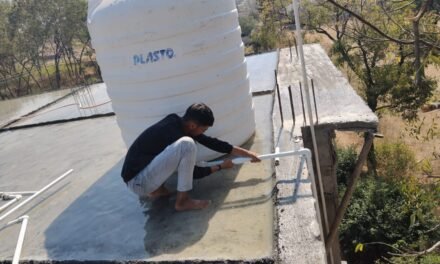# Understanding Ferrocement: A Versatile Construction Material## IntroductionFerrocement is a composite material widely used in construction for its strength, durability, and versatility. Combining steel reinforcement with cement, it offers unique properties that make it suitable for various applications, from small-scale structures to large architectural projects. In this blog, we will explore the characteristics, applications, advantages, and construction techniques of ferrocement.## What is Ferrocement?Ferrocement is a type of thin-shell construction material made from a mesh of steel reinforcement (usually wire or mesh) embedded in a cement mortar. This combination results in a strong, lightweight, and flexible material that can be molded into various shapes, making it ideal for both structural and aesthetic purposes.## Key Characteristics of Ferrocement### 1. **High Strength-to-Weight Ratio**Ferrocement structures are known for their excellent strength-to-weight ratio. This allows for thinner sections compared to conventional reinforced concrete, reducing material usage and costs.### 2. **Flexibility and Workability**The thin nature of ferrocement enables it to be easily molded into complex shapes and forms, providing architects with greater design freedom.### 3. **Durability**Ferrocement is highly resistant to cracking and environmental factors, making it suitable for both indoor and outdoor applications. Its resistance to corrosion enhances its longevity.### 4. **Cost-Effectiveness**Due to its reduced material requirements and the ease of construction, ferrocement can be a more economical option compared to traditional concrete.## Applications of Ferrocement### 1. **Water Tanks and Storage**Ferrocement is often used to construct water tanks, cisterns, and storage containers due to its impermeability and durability.### 2. **Boats and Marine Structures**The lightweight nature of ferrocement makes it an ideal material for boat construction, allowing for the creation of hulls and other components that can withstand harsh marine environments.### 3. **Architectural Elements**Ferrocement is increasingly used for decorative elements, such as domes, arches, and sculptures, thanks to its ability to be shaped into intricate designs.### 4. **Housing and Shelters**In low-cost housing projects, ferrocement provides an affordable yet strong solution for walls, roofs, and other structural components.### 5. **Infrastructure**Ferrocement is used in the construction of bridges, culverts, and other infrastructure projects where strength and durability are essential.## Advantages of Ferrocement### 1. **Rapid Construction**Ferrocement can be constructed quickly, making it ideal for projects with tight timelines. The ability to use thin sections allows for faster assembly.### 2. **Sustainability**The efficient use of materials and the potential for local sourcing of components make ferrocement a more sustainable option compared to traditional construction methods.### 3. **Reduced Labor Costs**The ease of handling and shaping ferrocement can lead to lower labor costs, as skilled workers can construct complex forms with relative ease.### 4. **Resilience to Seismic Forces**Ferrocement structures can perform well in seismic zones due to their flexibility and ductility, which helps absorb and dissipate energy during earthquakes.## Construction Techniques### 1. **Framework Preparation**Begin by creating a framework or mold that defines the shape of the desired structure. This can be done using wooden or metal forms.### 2. **Reinforcement Placement**Place steel mesh or wire reinforcement within the framework. Ensure proper spacing and alignment to maximize strength.### 3. **Mortar Application**Mix cement with sand and water to create a mortar. Apply this mortar over the reinforcement, ensuring it fills all gaps and adheres well.### 4. **Curing**Allow the ferrocement to cure properly. Curing is essential for achieving maximum strength and durability.### 5. **Finishing**Once cured, the surface can be finished as desired, whether through painting, plastering, or leaving it exposed for aesthetic purposes.## ConclusionFerrocement is a versatile and durable construction material that offers numerous advantages for various applications. Its strength, flexibility, and cost-effectiveness make it an appealing choice for architects and builders alike. As the demand for sustainable and innovative construction materials grows, ferrocement stands out as a valuable option, capable of meeting the challenges of modern building practices. By understanding its characteristics and applications, you can leverage ferrocement to create strong, resilient structures that stand the test of time.


